Bodies of Knowledge
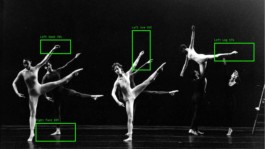
Project Details
Year
2020
Role
Interaction design
Programming
Concept creation
Creative direction
Exhibited
BIO 26 (SI)
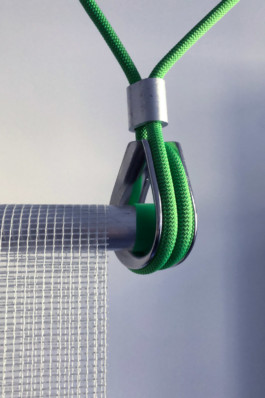
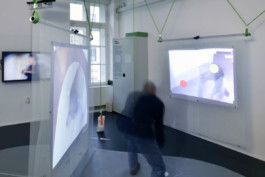
What types of knowledge do archives embody and perform? What can’t they perform? Archives format what is knowable, preserve objects that materialize the past, index and systematize things. They are technologies that reproduce strict logic of categorisation and separation.
Bodies of Knowledge is a temporary intervention within the Slovenian Dance Archive, by Rok Vevar. The installation shifts the archive from a site of knowledge retrieval, to one of knowledge production.
By dismantling and mobilizing documents, technologies and institutional framings into new compositions, the intervention invites visitors to access, navigate and contribute to the content of the archive, through movements and gestures.
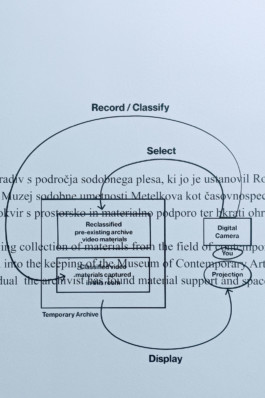

What if we used our bodies to archive the history of dance
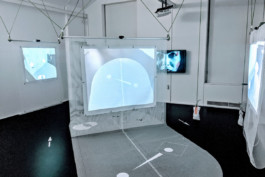
In the spirit of contemporary dance, Bodies of Knowledge breaks the internal logic of the archive by releasing the emancipatory power of movement. Historiographic structures dissolve, allowing for the emergence of alternative associations.
Digital data are opened up not only as research information but as a physical experience. You are invited to move, dance and gesture your way through Bodies of Knowledge, contributing footage of yourself to the Temporary Slovene Dance Archive, Rok Vevar.
Each of the three screens features fractured footage of archived videos from local choreographers. Installed near each screen, you’ll find a camera for recording visitors’ movements. The installation uses machine learning algorithms similar to those used in surveillance technologies to track and monitor your activity.

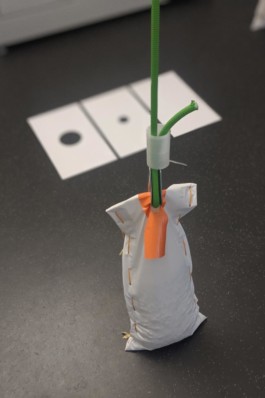
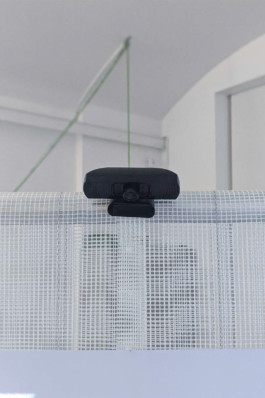
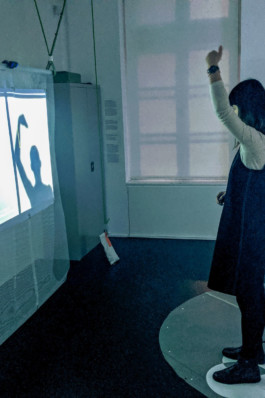

Using machine learning, through a combination of TensorflowJS, and PoseNet, the system identifies your gestures and movements comparing them to the movements recorded by choreographers who trained the system. When your movements are registered as similar enough, archive footage will begin to be displayed. Each station is focused on a particular body part: Legs, Arms and Heads. Each invites you to perform a particular interaction.
By making your own dance-like gestures in front of the camera and screens, you will be adding pieces of your own body’s movements into the archive. The addition of your movements to the stream of fractured archive footage happens in real-time, but there will be a short delay in between recording and viewing your movements.
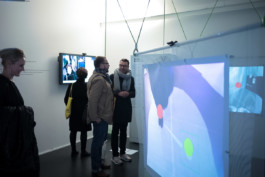

Dance offers a site for the production of cultural memory, which ensures that no voice can be forgotten or erased. The dancing body is the object of history remembered, and allows all people to be readable components of history. Today, however, visitors to the dance archives are cast as spectators, invited in to sit and look at screens or pages of text.
Cultural memory is kept in time capsules of videos, images, props, and historical newspapers. Visitors engage with these time capsules through static acts of witnessing, recalling and noting. But crucially not moving. The historical memory of dance is thus experienced outside of the body, frozen in time, sitting in cabinets, enclosed in objects, and collecting dust.
If dance is seen as an archive of memory, history and identity, then embodying this data creates a living archive, contained within the human body, allowing for extra-linguistic means of communicating culture and knowledge. As moves are constantly remade while practiced and performed, they necessarily involve reinterpretation and re-creation. Capturing moves is necessary for traditional archiving, yet this action removes the fluid performative qualities that are inherent to bodily movement. Bodies of Knowledge proposes to complement today’s static dance.
Project Credits
Created by
Cyrus Clarke, Juliana Lewis, Monika Seyfried,
Luigi Savio
Architects
ab(Normal)
Graphic design
Giulia Cordin
Design mentor
Paolo Patelli
Knowledge mentor
Ida Hirsenfelder
Project Manager
Mateusz Strauss
Exhibitions and Press
BIO 26 Design Biennial, Ljubljana
Wallpaper
The project was produced for BIO26 Design Biennial, Ljubljana as part of the 'Common Knowledge' program and exhibited at Museum of Contemporary Art Metelkova | +MSUM in collaboration with Temporary Slovene Dance Archive, Rok Vevar.
Bodies of Knowledge

Project Details
Year
2020
Role
Founder/Artist
Concept creation
Creative direction
Interactive design
Experience design
Projection mapping
Exhibited
BIO26 (SI)


What types of knowledge do archives embody and perform? What can’t they perform? Archives format what is knowable, preserve objects that materialize the past, index and systematize things. They are technologies that reproduce strict logic of categorisation and separation.
Bodies of Knowledge is a temporary intervention within the Slovenian Dance Archive, by Rok Vevar. The installation shifts the archive from a site of knowledge retrieval, to one of knowledge production.
By dismantling and mobilizing documents, technologies and institutional framings into new compositions, the intervention invites visitors to access, navigate and contribute to the content of the archive, through movements and gestures.




What if we used our bodies to archive the history of dance
In the spirit of contemporary dance, Bodies of Knowledge breaks the internal logic of the archive by releasing the emancipatory power of movement. Historiographic structures dissolve, allowing for the emergence of alternative associations.
Digital data are opened up not only as research information but as a physical experience. You are invited to move, dance and gesture your way through Bodies of Knowledge, contributing footage of yourself to the Temporary Slovene Dance Archive, Rok Vevar.
Each of the three screens features fractured footage of archived videos from local choreographers. Installed near each screen, you’ll find a camera for recording visitors’ movements. The installation uses machine learning algorithms similar to those used in surveillance technologies to track and monitor your activity.



Using machine learning, through a combination of TensorflowJS, and PoseNet, the system identifies your gestures and movements comparing them to the movements recorded by choreographers who trained the system. When your movements are registered as similar enough, archive footage will begin to be displayed. Each station is focused on a particular body part: Legs, Arms and Heads. Each invites you to perform a particular interaction.
By making your own dance-like gestures in front of the camera and screens, you will be adding pieces of your own body’s movements into the archive. The addition of your movements to the stream of fractured archive footage happens in real-time, but there will be a short delay in between recording and viewing your movements.



Dance offers a site for the production of cultural memory, which ensures that no voice can be forgotten or erased. The dancing body is the object of history remembered, and allows all people to be readable components of history. Today, however, visitors to the dance archives are cast as spectators, invited in to sit and look at screens or pages of text.
Cultural memory is kept in time capsules of videos, images, props, and historical newspapers. Visitors engage with these time capsules through static acts of witnessing, recalling and noting. But crucially not moving. The historical memory of dance is thus experienced outside of the body, frozen in time, sitting in cabinets, enclosed in objects, and collecting dust.
If dance is seen as an archive of memory, history and identity, then embodying this data creates a living archive, contained within the human body, allowing for extra-linguistic means of communicating culture and knowledge. As moves are constantly remade while practiced and performed, they necessarily involve reinterpretation and re-creation. Capturing moves is necessary for traditional archiving, yet this action removes the fluid performative qualities that are inherent to bodily movement. Bodies of Knowledge proposes to complement today’s static dance.
Project Credits
Created by
Cyrus Clarke, Juliana Lewis, Monika Seyfried, Luigi Savio
Architects
ab(Normal)
Graphic design
Giulia Cordin
Design mentor
Paolo Patelli
Knowledge mentor
Ida Hirsenfelder
Project Manager
Mateusz Strauss
Exhibitions and Press
BIO 26 Design Biennial, Ljubljana
Wallpaper
The project was produced for BIO26 Design Biennial, Ljubljana as part of the 'Common Knowledge' program and exhibited at Museum of Contemporary Art Metelkova | +MSUM in collaboration with Temporary Slovene Dance Archive, Rok Vevar.



© Cyrus Clarke 2025